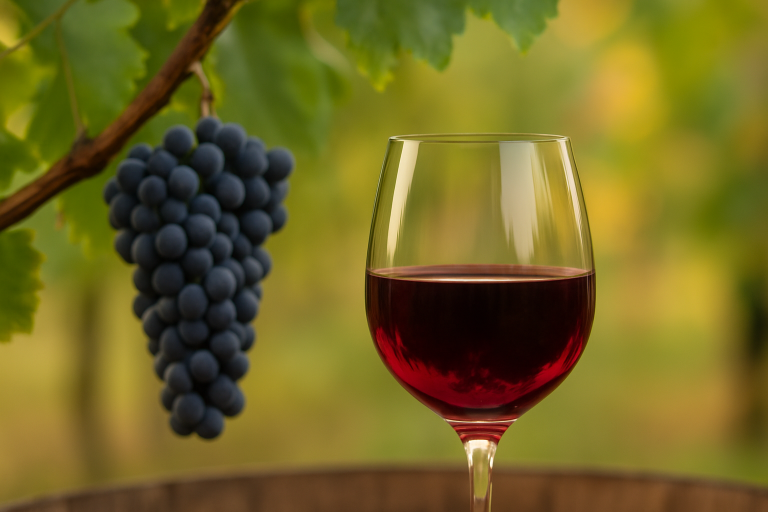Elegant, aromatic, and delightfully versatile, Cinsault (also spelled Cinsaut) is one of the Mediterranean’s most charming red grapes. Known for its light body, floral perfume, and silky texture, it’s often blended with bolder varieties like Grenache and Syrah — but when allowed to shine on its own, Cinsault reveals a personality full of grace and warmth. From Provence rosés to complex Rhône reds, it’s a grape that thrives under the sun yet delivers a refreshingly gentle touch.
A Brief History
The origins of Cinsault trace back to the southern coast of France, likely emerging in the Languedoc or Provence regions centuries ago. Its name is derived from the old Provençal word sinsau, meaning “sensible” or “prudent” — a fitting description for a grape prized for its adaptability and balance.
For much of its history, Cinsault was a workhorse variety in the Mediterranean basin, appreciated for its ability to withstand heat and drought while producing wines with soft tannins and aromatic charm. In France, it became an essential component of Southern Rhône blends and the world-famous rosés of Provence.
Cinsault also played a surprising role in South Africa’s wine story: it was one of the parent grapes of Pinotage, created in 1925 when viticulturist Abraham Perold crossed Cinsault with Pinot Noir. Its resilience and fruit-forward character made it an ideal foundation for that uniquely South African creation.
Where It’s Grown
Cinsault is cultivated across the Mediterranean world, where it thrives in warm, dry climates:
- France: Most prominent in Languedoc, Rhône Valley, and Provence, where it’s used in blends and rosé wines.
- South Africa: Known locally as Hermitage in older plantings, contributing to blends and Pinotage’s heritage.
- Lebanon: A key grape in Bekaa Valley reds, often blended with Cabernet Sauvignon.
- Morocco, Tunisia, and Algeria: Produces soft, fruit-driven wines suited to the region’s heat.
- Chile & California: Increasingly popular for natural and low-intervention wines, where it yields light, expressive reds with vibrant fruit.
Its adaptability makes Cinsault a global traveler, always maintaining its Mediterranean charm wherever it grows.
Tasting Notes
Cinsault is typically light- to medium-bodied, with soft tannins and bright acidity, making it exceptionally food-friendly. Aromas of strawberry, raspberry, and red cherry are accented by rose petal, black tea, and spice.
On the palate, it’s smooth and juicy, with flavors of fresh red berries, herbs, and a touch of earthiness. Cinsault often delivers a refreshing finish with just enough structure to make it interesting but never overwhelming. Oak aging is rare — most producers aim to preserve its purity and fruit-driven character.
Serve slightly chilled to enhance its freshness, and pair it with grilled vegetables, roasted chicken, charcuterie, or Mediterranean cuisine like ratatouille or lamb with herbs. In rosé form, it’s equally delightful with seafood or summer salads.
The Essence of Cinsault
Cinsault is a celebration of balance and beauty — a wine that captures the sun without the weight. It’s the gentle voice among bold Mediterranean reds, offering freshness, perfume, and effortless drinkability.
Whether enjoyed as a bright rosé from Provence or a lively red from the Rhône or Chile, Cinsault proves that elegance doesn’t need power to make an impression. It’s a wine for those who appreciate nuance, simplicity, and the quiet artistry of a well-made glass.








One Comment